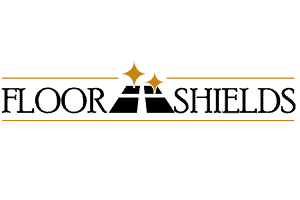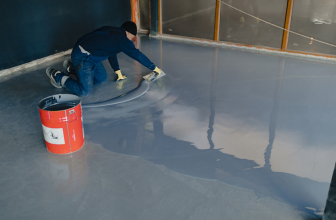P and R Slip Rating in Epoxy Floor Coating

P and R Slip Rating in Epoxy Floor Coating! Epoxy flooring is a popular choice for commercial and industrial spaces because of its durability, chemical resistance, and easy maintenance. However, it’s important to consider the slip resistance of epoxy floor coatings to ensure safety in high-traffic areas. Slip resistance is measured by the P and R slip ratings which indicate the coefficient of friction between the flooring surface and a person’s shoe.
Understanding P and R slip ratings in epoxy floor coating is crucial when it comes to selecting the right type of flooring for your space. In this article, we will provide an in-depth discussion on what P and R slip ratings mean, how they are measured, and why they matter for businesses looking to create safe environments for their employees, customers, or visitors.
Table of Contents
P and R Slip Rating in Epoxy Floor Coating
Here we will delve into the significance of P and R slip ratings and how they are determined.
Understanding P Slip Rating
The P slip rating, also known as the Pendulum Test Value (PTV), is a measure of the slip resistance of a flooring surface under wet conditions. The P rating is based on the pendulum test, which simulates the slip resistance of a floor by measuring the friction generated when a rubber slider is dragged across a wet surface. The test results are used to assign a P rating to the floor coating.
The P slip rating scale ranges from P0 to P5, with P0 indicating a very low slip resistance and P5 representing the highest slip resistance. Floors with a higher P rating offer better traction and reduce the likelihood of slip accidents, particularly in areas prone to moisture, spills, or frequent cleaning. For example, industrial kitchens, bathrooms, swimming pool decks, and food processing facilities often require high P slip ratings to ensure safety.
Understanding R Slip Rating
The R slip rating, also known as the Ramp Test Value, is another measure of slip resistance, specifically designed for evaluating the slip resistance of a flooring surface under oily or greasy conditions. The R rating is determined through the ramp test, which involves measuring the angle of inclination at which a person can safely walk on the floor without slipping.
Similar to the P rating, the R slip rating scale ranges from R9 to R13, with R9 indicating a lower slip resistance and R13 representing the highest slip resistance. The R rating helps assess the flooring’s performance in environments where oil, grease, or other lubricants may be present, such as commercial kitchens, automobile service areas, and industrial workshops.
Importance of P and R Slip Ratings
The P and R slip ratings play a vital role in ensuring the safety of occupants and reducing the risk of slip and fall accidents. By evaluating the slip resistance of epoxy floor coatings, businesses can make informed decisions regarding the appropriate type of flooring for different areas within their premises. Here are a few reasons why understanding P and R slip ratings is crucial:
Safety: Slip and fall accidents can result in serious injuries, legal liabilities, and increased insurance costs. By choosing epoxy floor coatings with high P and R slip ratings, businesses can significantly reduce the risk of accidents and prioritize the safety of their employees, customers, and visitors.
Compliance: In many countries, safety regulations and standards exist that mandate specific slip resistance requirements for certain industries or public spaces. Understanding P and R slip ratings helps businesses comply with these regulations and ensure that their flooring meets the necessary safety standards.
Risk Mitigation: Certain environments, such as commercial kitchens or production areas, are prone to spills, moisture, or oil exposure. Having epoxy floor coatings with appropriate P and R slip ratings mitigates the risk of accidents in such areas by providing enhanced traction and slip resistance.
Reputation: Businesses that prioritize safety create a positive reputation among customers and employees. By investing in epoxy floor coatings with high P and R slip ratings, companies demonstrate their commitment to creating a safe working or shopping environment, enhancing their brand image and trustworthiness.
Conclusion
In conclusion, understanding the P and R slip rating in epoxy floor coating is crucial for ensuring safety and avoiding accidents. Knowing what type of environment the coating will be applied in can help determine the appropriate slip rating needed. Additionally, it is important to consider not only the slip resistance but also other factors such as durability and ease of maintenance when choosing an epoxy floor coating. By taking these factors into account, you can select a high-quality epoxy floor coating that meets your needs and provides a safe surface for everyone who uses it. Don’t overlook the importance of slip rating in your next flooring project!








